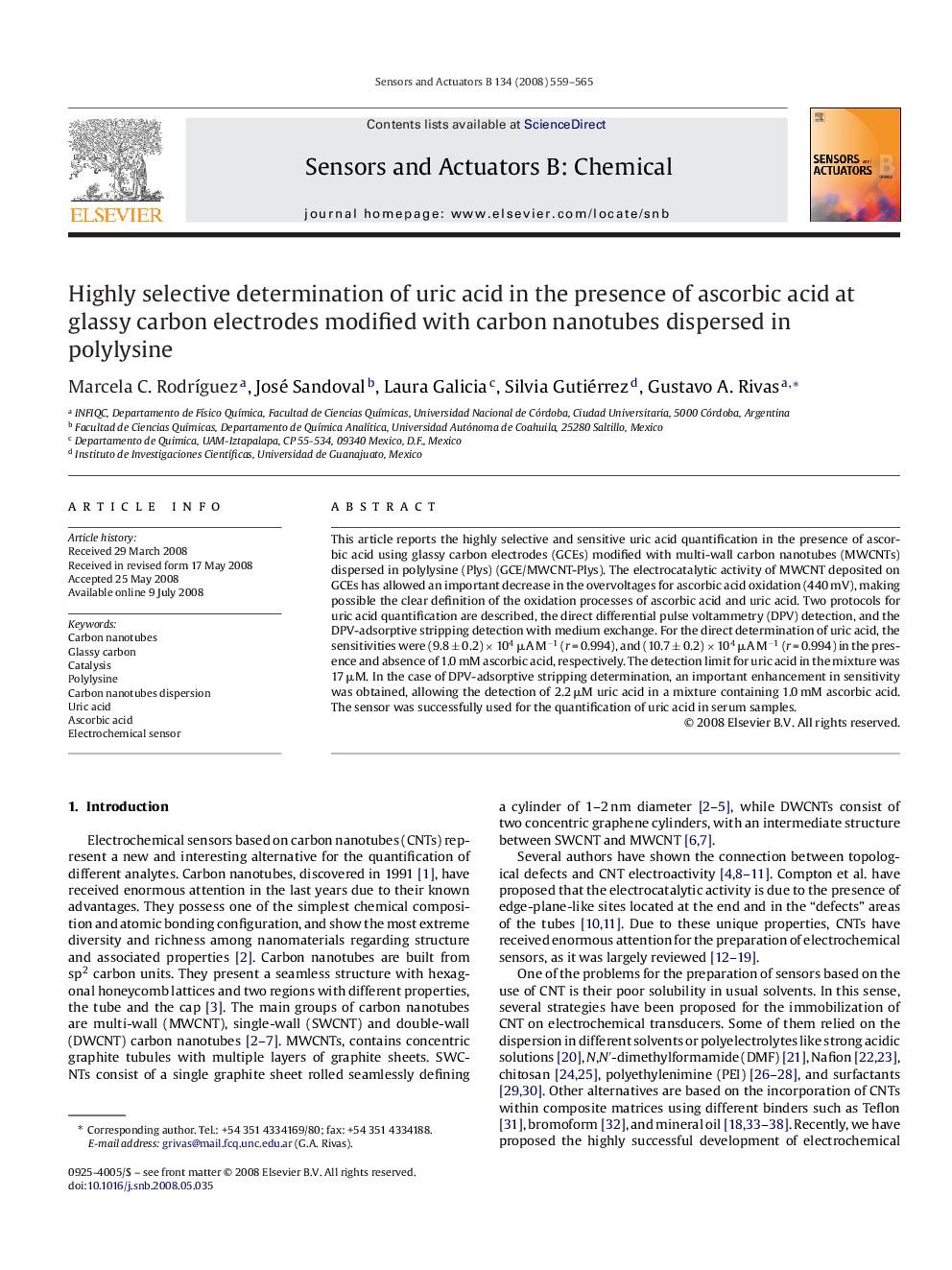| Article ID | Journal | Published Year | Pages | File Type |
|---|---|---|---|---|
| 741212 | Sensors and Actuators B: Chemical | 2008 | 7 Pages |
This article reports the highly selective and sensitive uric acid quantification in the presence of ascorbic acid using glassy carbon electrodes (GCEs) modified with multi-wall carbon nanotubes (MWCNTs) dispersed in polylysine (Plys) (GCE/MWCNT-Plys). The electrocatalytic activity of MWCNT deposited on GCEs has allowed an important decrease in the overvoltages for ascorbic acid oxidation (440 mV), making possible the clear definition of the oxidation processes of ascorbic acid and uric acid. Two protocols for uric acid quantification are described, the direct differential pulse voltammetry (DPV) detection, and the DPV-adsorptive stripping detection with medium exchange. For the direct determination of uric acid, the sensitivities were (9.8 ± 0.2) × 104 μA M−1 (r = 0.994), and (10.7 ± 0.2) × 104 μA M−1 (r = 0.994) in the presence and absence of 1.0 mM ascorbic acid, respectively. The detection limit for uric acid in the mixture was 17 μM. In the case of DPV-adsorptive stripping determination, an important enhancement in sensitivity was obtained, allowing the detection of 2.2 μM uric acid in a mixture containing 1.0 mM ascorbic acid. The sensor was successfully used for the quantification of uric acid in serum samples.
